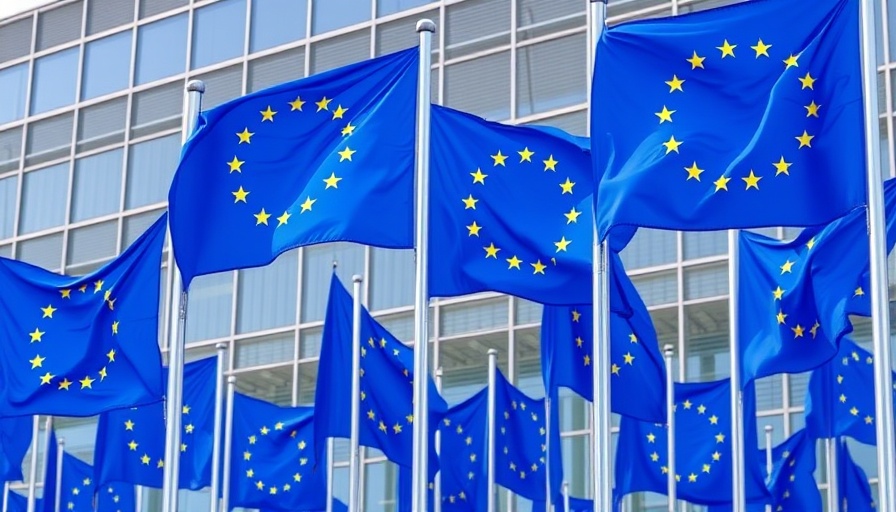
A New Era: The EU AI Act Explained
The European Union's Artificial Intelligence (AI) Act is heralded as the world's first comprehensive AI law. This pivotal legislation is set to reshape the AI landscape not just in Europe but globally, impacting how companies develop and deploy AI systems. As the act progresses towards implementation, it represents both a challenge and an opportunity for the 450 million citizens across 27 EU member states, as well as for companies that operate within or trade with this massive market.
Why the EU AI Act Matters for Global Players
One of the defining characteristics of the EU AI Act is its expansive reach. Its regulations will apply not only to European firms but also to non-EU companies that offer AI solutions or technologies to Europe. This means that a tech startup in Central Ohio needs to comply with the act if it wishes to market its AI-driven product in the EU. By creating a uniform legal framework for AI, the act ensures that all entities meet the same standards—this helps prevent a race to the bottom in quality and ethical considerations.
Fostering Trust While Encouraging Innovation
The underlying goal of the EU AI Act is to promote human-centric and trustworthy AI. According to European lawmakers, this means ensuring high standards of health, safety, and protection of fundamental rights while allowing for innovation to flourish. This balance poses a significant question: how does one promote innovation without compromising ethical standards?
Understanding the Risk-Based Approach
To address the dual objectives of innovation and harm prevention, the EU AI Act adopts a risk-based approach to AI regulation. Under this framework, AI applications are categorized into three risk levels—unacceptable risk, high-risk, and limited risk. i. **Unacceptable Risk**: Certain AI applications will be outright banned. These could include systems that manipulate human behavior or infringe on privacy rights. ii. **High-Risk Applications**: This category includes AI used in critical areas like healthcare, law enforcement, and education. For these applications, the EU will impose stringent regulations to ensure accountability and transparency. iii. **Limited Risk Scenarios**: For applications deemed low-risk, regulatory obligations will be less severe, allowing for easier entry into the market for emerging technologies.
The Trade-offs of AI Regulation
While the EU AI Act sets high standards for AI systems to protect citizens, it also raises critical questions for tech entrepreneurs and businesses. For instance, how will these regulations affect the speed of AI innovation? Will small startups be able to compete with larger corporations that have more resources to comply with complex regulations? These questions are central to discussions ongoing in many forums, including the emerging tech scenes in places like Central Ohio.
Local Perspectives on a Global Challenge
Understanding the EU AI Act's requirements is crucial for local entrepreneurs seeking to enter international markets. This legislation encourages businesses to view compliance not as a burden but as a strategy for building trust with consumers. By actively engaging with ethical design and transparency, companies can not only thrive within the EU but also establish a positive reputation worldwide.
Looking Ahead: Opportunities and Challenges
As AI technology continues to advance, the implications of the EU AI Act will only grow. Startups should consider how they can align with these regulations as a competitive advantage. Furthermore, the focus on responsible innovation aligns well with global trends emphasizing sustainability and customer trust.
In conclusion, the EU AI Act represents a pivotal moment in the intersection of technology and regulation. It is an invitation for startups and businesses to think critically about their AI applications and to prioritize ethical considerations as they innovate. As these discussions evolve, now is the time for professionals and entrepreneurs in Central Ohio to anticipate and adapt to the future landscape of AI.
 Add Row
Add Row  Add
Add 




Write A Comment